Wrexham and District Electric Tramways
History
Wrexham and District Electric Tramways were owned and operated by the Wrexham and District Electric Tramways Company, which was a subsidiary of the much larger British Electric Traction Company Ltd (BETCo), a concern which at its zenith either owned, part-owned or leased almost 50 tramway concerns across the British Isles.
The BETCo began its involvement with the tramways of Wrexham through its purchase — on the 22nd December 1900 — of the existing 3ft 0ins-gauge horse tramway. Although this was owned by the Wrexham Tramways Company, the latter had reached agreement with another concern — Drake and Gorham Electric Power and Traction Company Ltd — to convert the system to electric traction and to extend it, and it was the latter company from whom BETCo acquired the tramway, as well as powers to convert and extend it.
The last horse service, which was operated by a lessee, Frederick Llewelyn Jones, was withdrawn on the 26th April 1901, so that reconstruction for electric working and conversion to a wider gauge of 3ft 6ins could begin. Electric services commenced on the 4th April 1903.
At its maximum, the W&DETCo operated just 4.44 miles of tramway, which was essentially a single line with some short stretches of double track. The northern terminus was situated by the Turf Hotel on Mold Rd, the line running southeastwards from there, through Wrexham, before turning southwestwards to Johnstown; a short branch ran westwards from Johnstown towards Rhos, terminating a short distance from the town at Ponciau. Although several extensions were either authorised or planned, for example, to Ruabon and Llangollen, none were ever built.
Whilst financial details are sketchy, it seems likely that the company never made enough money to adequately cover maintenance and renewals. Indeed, its successful experimentation with bus services, the first being introduced as early as the 23rd September 1912, clearly demonstrated that more money was to be made from this mode of transport rather than the trams. The bus services were therefore expanded, the company changing its name on the 19th March 1914 — to the Wrexham and District Transport Co Ltd — to reflect this expansion. Unfortunately for the W&DTCo, the Great War intervened, and all its buses were requisitioned. The tramway meanwhile had to carry heavier passenger loadings, due to war-driven work and the lack of buses, whilst keeping maintenance and renewals to the bare minimum.
Like many tramway systems across the British Isles, the W&DET emerged from the Great War in badly run down condition. To make matters worse for the tramway, the company's energies and finances were now firmly directed towards bus operation, with as little money as possible being spent on the tramway. The system managed to struggle on through the early 1920s on a 'make do and mend' basis, becoming ever more decrepit. Although it also had to suffer the vicissitudes of unregulated bus competition, the real body blow came in 1924 when the electricity supply contract expired, Wrexham Corporation (the generators) taking the opportunity to significantly increase the price of current.
As a result, services were gradually cut back, and at the end of 1926, it was announced that the system would close. The last trams ran on the 31st March 1927.
Uniforms
The photographs below clearly show WDETCo staff wearing the familiar and largely regulation BETCo uniform. Although jackets appeared to vary somewhat between BETCo systems, as well as across the decades, the cap badges, collar designations and buttons invariably followed a standard pattern.
Electric tramcar crews were initially issued with double-breasted jackets with five pairs of brass buttons (of the standard BETCo pattern — see link) and lapels; the latter almost certainly bore system initials in block capitals on both sides. The tensioned-crown peaked caps bore a standard BETCo ‘Magnet & Wheel’ cap badge (see below), beneath which an employee number (in individual brass numerals) was worn.
The above uniform was quickly superseded by a new design of jacket: these were single-breasted with five buttons (of the standard BETCo pattern — see link), a single breast pocket on the bearer's left-hand side (with button closure) and stand-up collars; the latter carried an employee number (in individual numerals) on the bearer's left-hand side, and system initials — 'W & D E T' — on the right-hand side. The badges and the buttons were almost certainly brass. The caps and their insignia remained unchanged.
By the time of the Great War, and in all probability much earlier, a switch had been made to double-breasted,'lancer-style tunics with five pairs of buttons (narrowing from top to bottom) and stand-up collars; the latter continued to bear the same insignia as previously, though seemingly with 'W & D T' in place of the earlier 'W & D E T'.
After the Great War, the company struggled on with increasingly dilapidated trams, their careworn condition seemingly also reflected in the company's relaxed attitude to uniforms, with several photos from the 1920s showing tramcar crews in a variety of makeshift uniforms, frequently with flat caps or other informal headgear. Where uniform jackets are in evidence, these are single-breasted with five buttons, two breast pockets (with button closures), stand-up collars, and epaulettes. The insignia were probably the same as used previously, at least initially, but as time wore on, even this embellishment appears to have been allowed to lapse.
Tramcar crews were also provided with long, double-breasted greatcoats with five pairs of buttons, three waist/hip level pockets, epaulettes (with button fastening) and high, fold-over collars. The epaulettes probably carried an employee number, though this cannot be made out with certainty on surviving photographs; the collars were left unadorned.
Inspectors wore single-breasted with hidden buttons (or more likely a hook and eye affair), edged in a finer material than the main jacket, and with stand-up collars; the latter bore 'Inspector' in embroidered script lettering. The tensioned-crown peaked caps bore the standard BETCo 'Magnet & Wheel’ cap badge, above a hat band with the grade — 'Inspector' — in embroidered script-lettering. The Chief Inspector appears to have worn a virtually identical uniform, but with 'Chief Inspector' insignia in place of 'Inspector'.
Female staff were employed in significant numbers (as conductresses and as motorwomen) during the Great War to replace male staff lost to the armed services, and in contrast to most English tramway systems, continued to be employed right through to closure in 1927. These ladies were issued with long, tailored, double-breasted jackets with five pairs of buttons, which like the mens' jackets, bore a single breast pocket on the bearer's left-hand side (with button closure). The jacket also had a waist belt, epaulettes (with button fastening) and tall stand-up collars; the latter carried an employee number on the left-hand side and 'W & D T' initials on the right-hand side. Headgear took the form of a wide-crown, soft-topped peaked cap, which bore the standard 'BETCo' cap badge above an employee number. This style of uniform was quite unlike anything worn on any of the other BETCo systems nationwide.
In the 1920s, conductresses appear to have worn a variety of makeshift attire, without insignia of any kind.
An inspectress was also employed — a Mrs Phillips — who wore the same uniform as the other ladies, but with 'Inspectress' in embroidered script lettering on the stand-up collars of her jacket; the cap was the same as worn by inspectors, so differed from that worn by female tramcar staff.
Further reading
For a history of the Wrexham District Electric Tramways, see 'North Wales Tramways' by Keith Turner; David and Charles (1979).
My thanks go to Alan Brotchie for providing the majority of the photographs shown below, many of them from the collection of the late Harry Dibdin.
Images
Motormen and conductors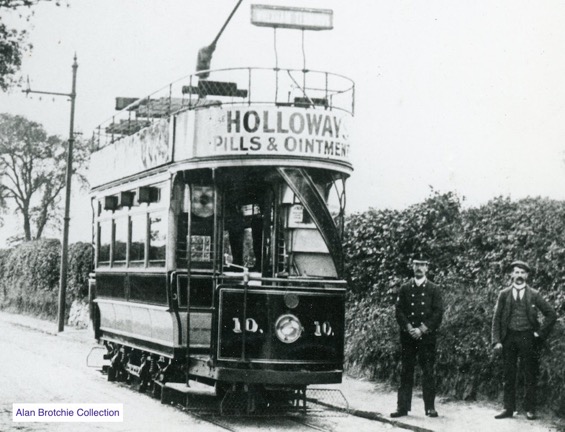
Motorman Moffat, later an inspector, and an overhead engineer with a brand new Tramcar No 10 at Rhostyllen in 1903.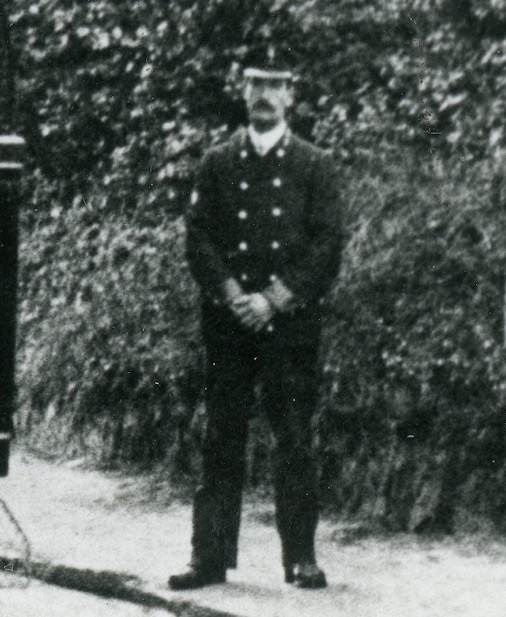
An enlargement of the above photograph showing Mr Moffat in the early double-breasted type of jacket with lapels.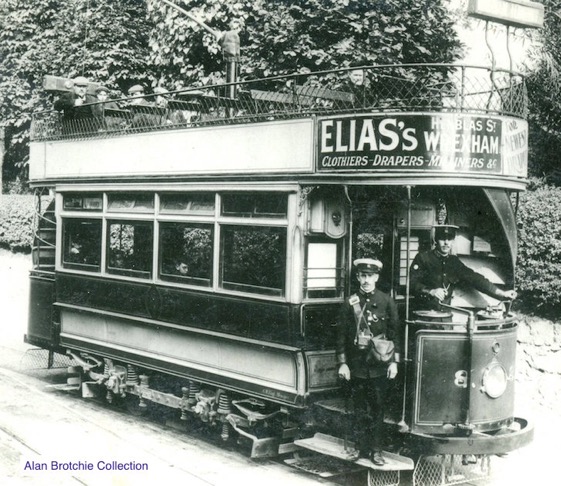
Tramcar No 8 at Cemetary Loop in the summer of 1904.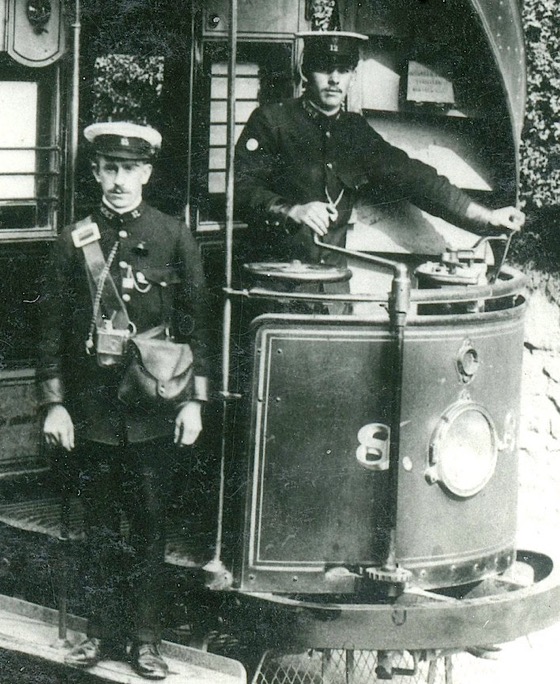
An enlargement of the above photograph showing the conductor (Employee No 15) and the Motorman (Employee No 12). Although the conductor's standard 'BETCo' cap badge appears to be absent, it is in fact under the white rain cover of his cap.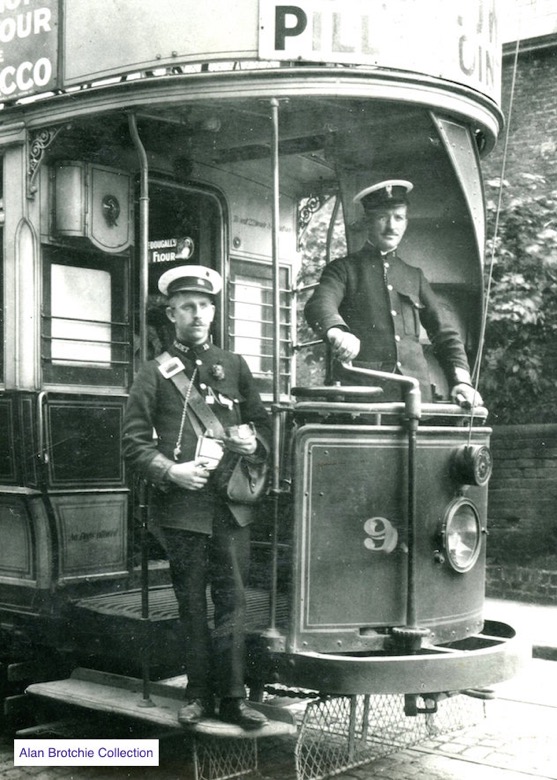
The same conductor as above (Employee No 15), this time with a different motorman (Employee No 3) and Tramcar No 9 — taken on Gutter Hill in Rhos in the summer of 1905.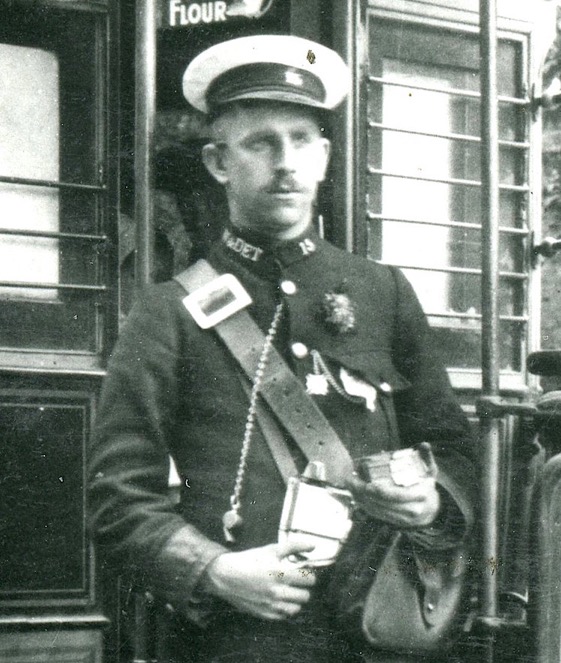
A blow-up of the above photograph showing details of the conductor's uniform. The collar initials are 'W & D E T'.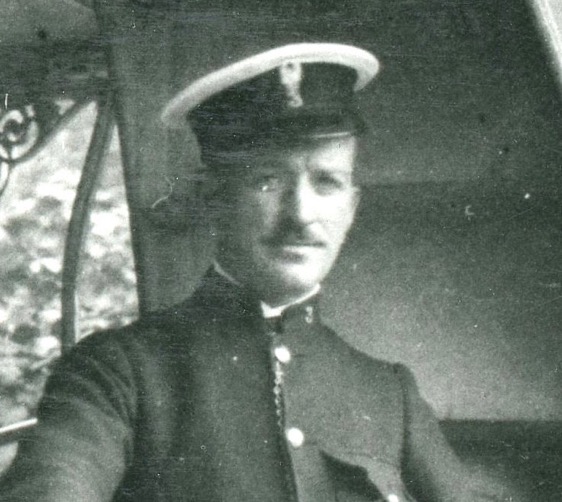
Another enlargement of the above photograph, this time showing the motorman. The standard 'BETCo' 'Magnet & Wheel' cap badge sits above his employee number (3).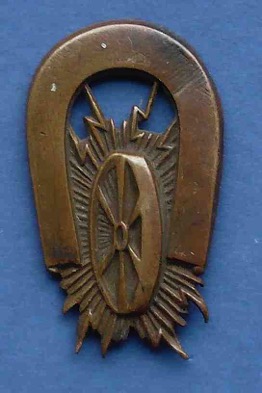
Standard British Electric Traction Company ‘Magnet & Wheel’ cap badge — brass. Author's Collection.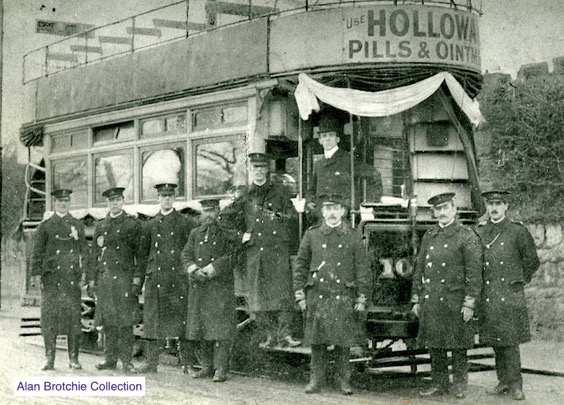
Tramcar 10 at Rhostyllen, decorated to mark the funeral of Motorman W Edwards in 1909. Those that can be identified are as follows: T H Hughes (1st left); J Mackie, former horse tram driver (4th left); Chief Inspector Steen, who drove the tram on this occasion (on tramcar steps); D Bowen, Chief Clerk (in bowler hat); Thy Evans (3rd right); W Quiff (2nd right); E Morris (1st right).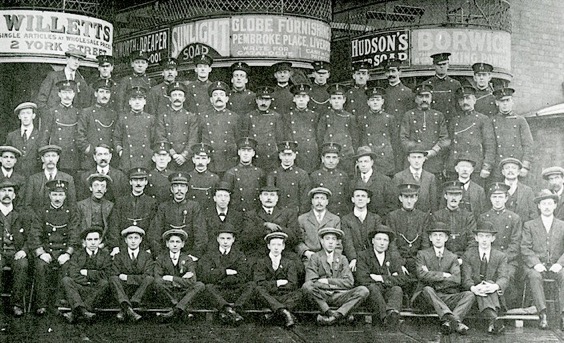
A formal staff photograph taken at Johnstown depot in 1914.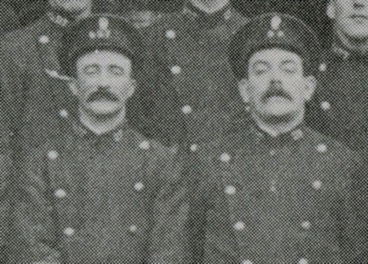
An enlargement of the above photograph showing two of the tramcar staff. By this time, a switch had clearly been made to double-breasted lancer-style tunics.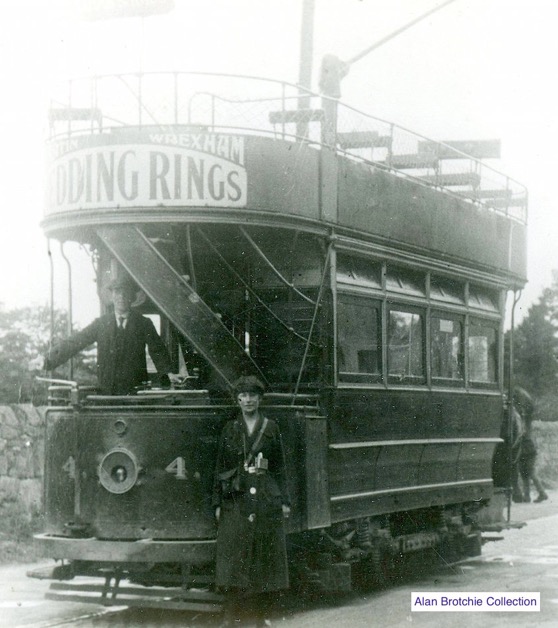
Tramcar No 4 at Rhostyllen— although dated 1917, it was almost certainly taken in the 1920s given the lack of uniforms, the later-period tram livery, and the tramcar's rather battered state.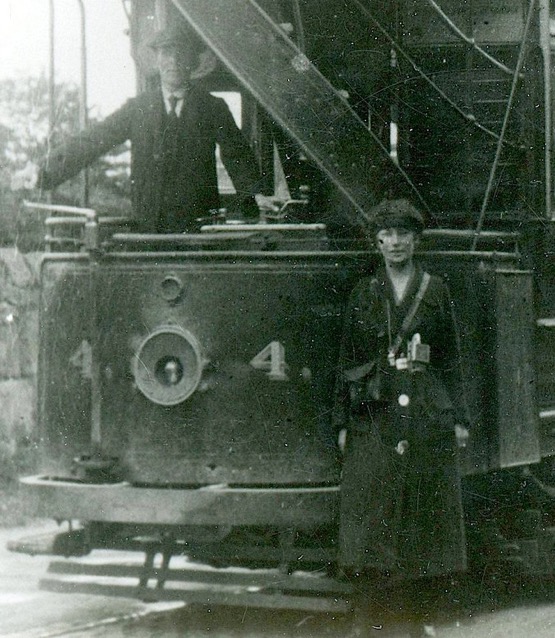
An enlargement of the above photograph showing Motorman Jim Newnes and Conductress Bessie Jones, both of whom appear to be wearing informal attire.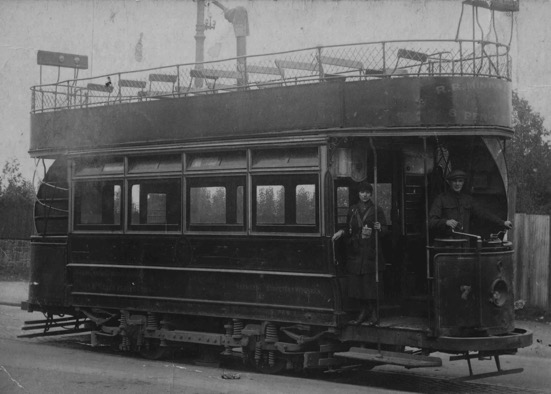
The crew of Tramcar No 7 pictured at the Turf Hotel Wrexham in 1925. 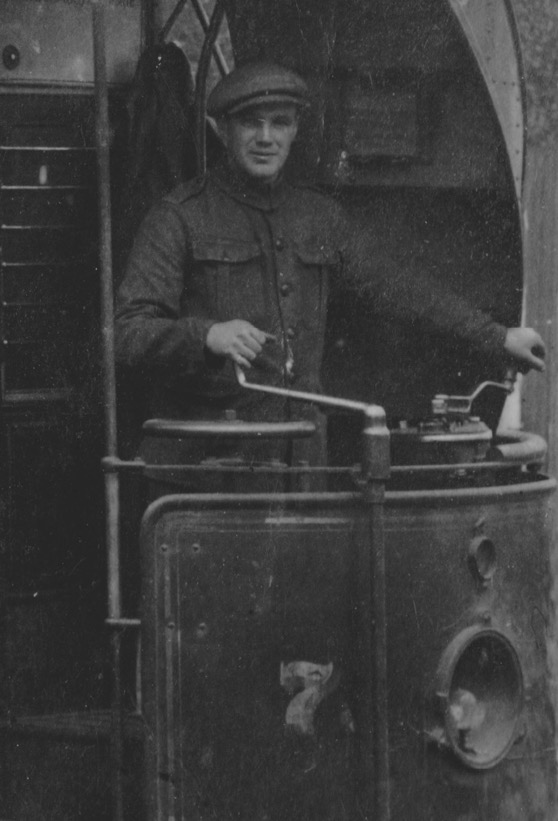
An enlargement of the above photograph showing the motorman. He is wearing a flat cap and what is possibly an old army uniform with non-reflective buttons; the entire ensemble is devoid of insignia.
Senior staff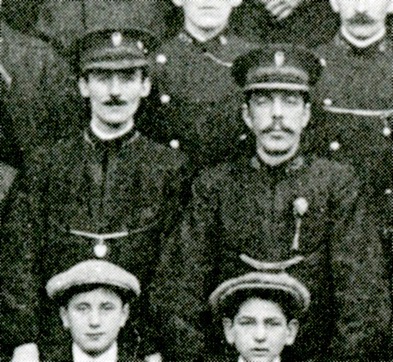
An enlargement of the 1914 staff photograph above showing Inspector Tom Roberts (left) and Chief Inspector George Steen (right).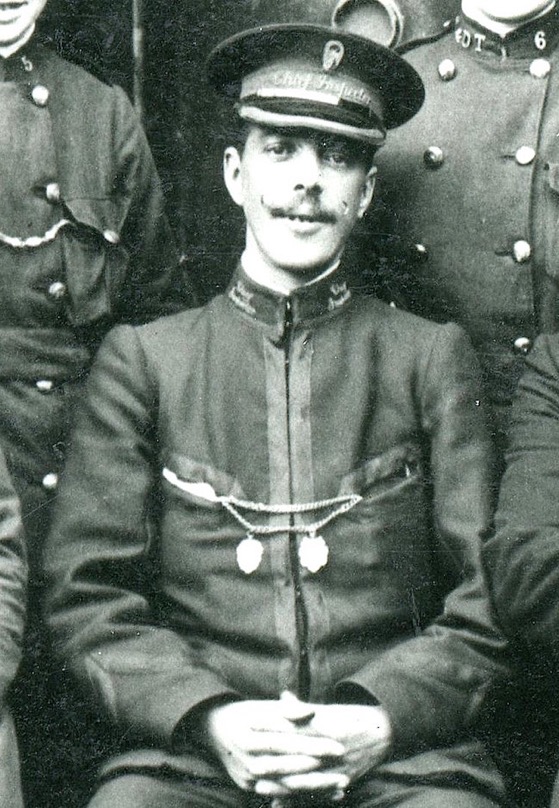
An enlargement of the motorwomen photo below showing Chief Inspector George Steen — 1918. The jacket's cuffs are embellished with chevrons.
Female staff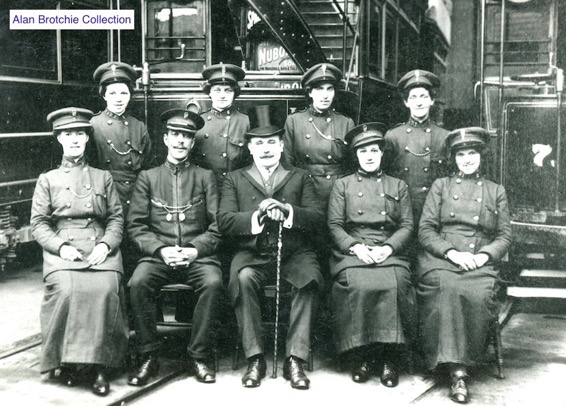
An evocative survival from 1918 showing the Chief Inspector and Manager along with six motorwomen and an inspectress. Front row: Mrs Purcell (No 7), Chief Inspector Steen, Manager A A Hawkins, Inspectress Phillips, Mrs Jackson (No 2). Rear: Mrs Woodhead (No 5), Miss Daniels (No 6), Miss Plumbley (No 1), Mrs Roberts (No 3).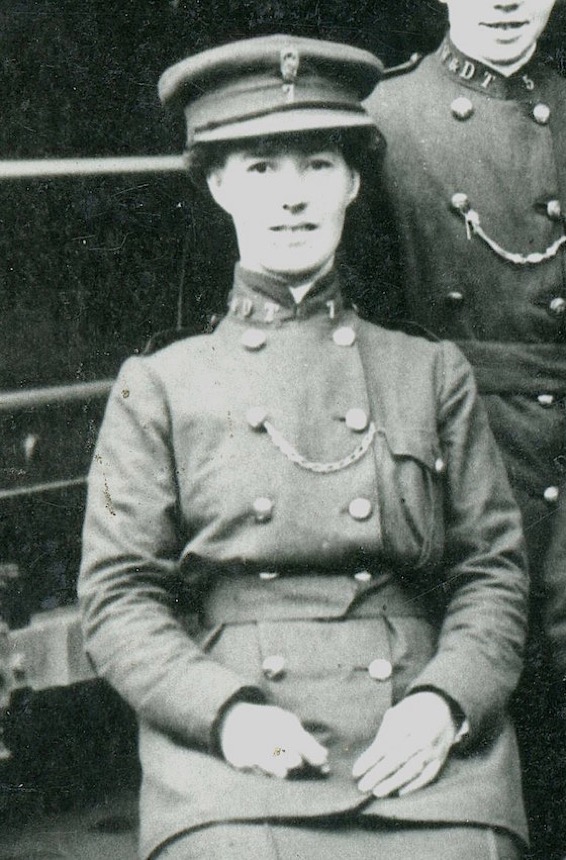
An enlargement of the above photograph showing Mrs Purcell. The uniforms were clearly of high quality, giving a very smart appearance, in stark contrast to the laissez faire policy that prevailed towards closure.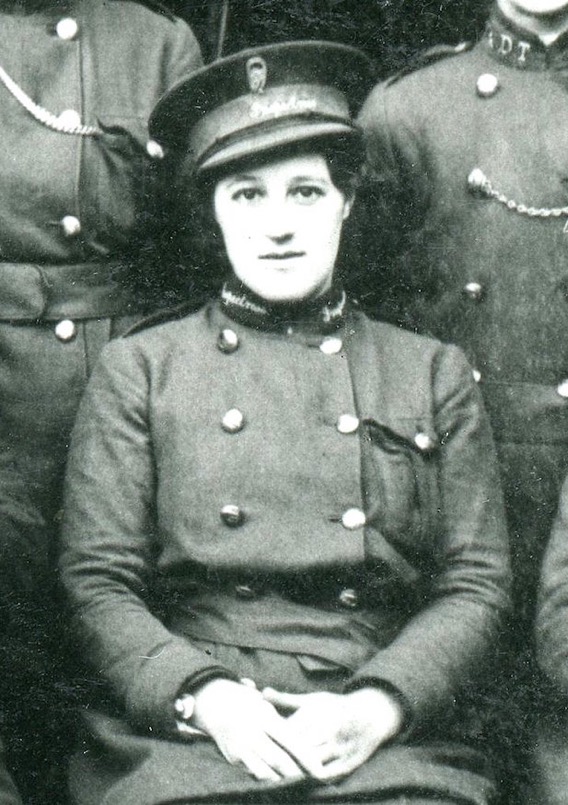
Another enlargement of the above photograph, this time showing Inspectress Phillips. The uniform is identical to those worn by the other ladies, but with the addition of embroidered grade insignia; the cap is the same as worn by male inspectors.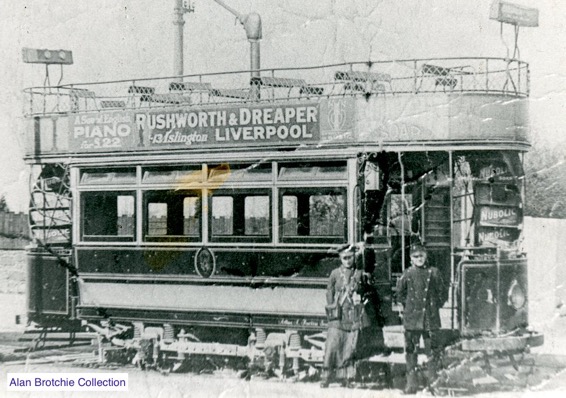
A damaged photograph of Tramcar No 1, but one which does show a Great War conductress in uniform.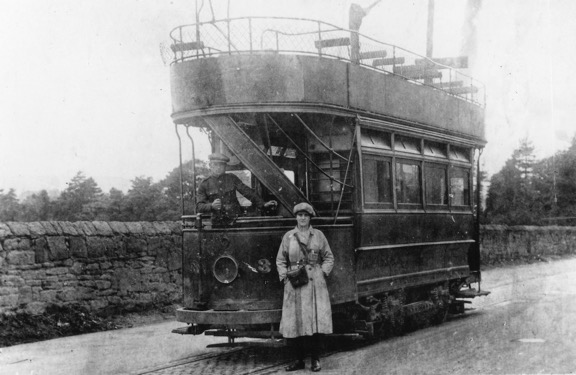
Tramcar No 3 at Rhostyllen — photo undated, but judging by the poor state of the tram and its livery, probably taken in the mid 1920s. Author's Collection.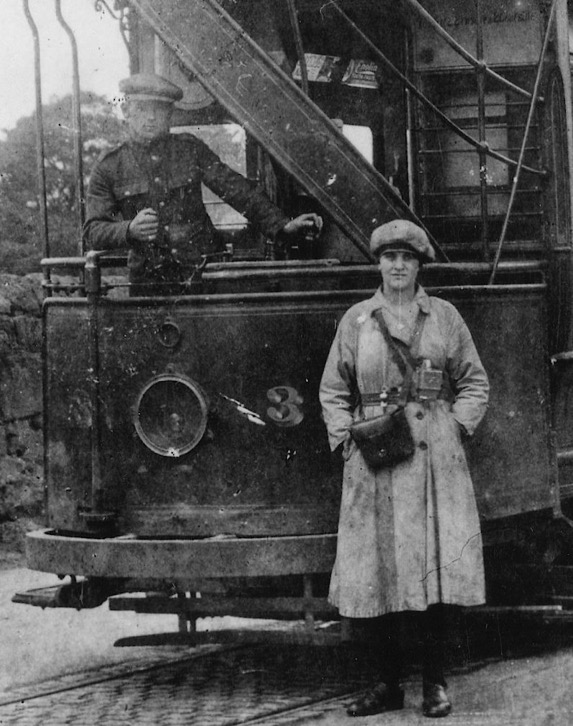
An enlargement of the above photograph showing the crew members. The only uniform item on display appears to be the motorman's jacket.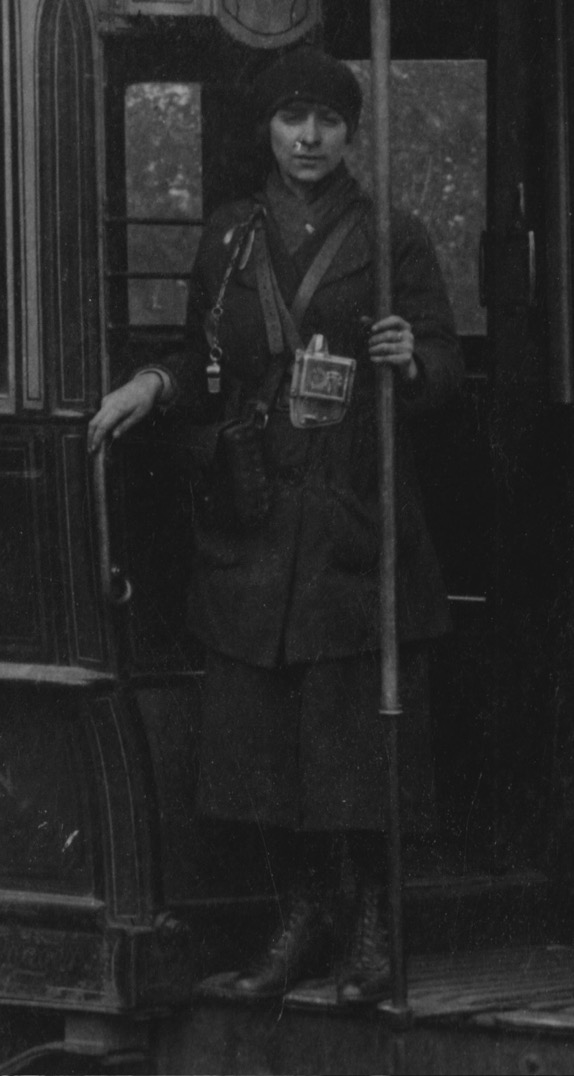
An enlargement of the 1925-shot of Tramcar No 7 (see earlier) showing the conductress. Although she could be wearing a uniform jacket and skirt, her hat looks to be informal. There is no sign of a badge anywhere.